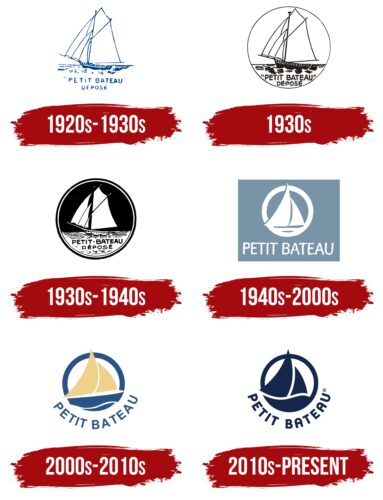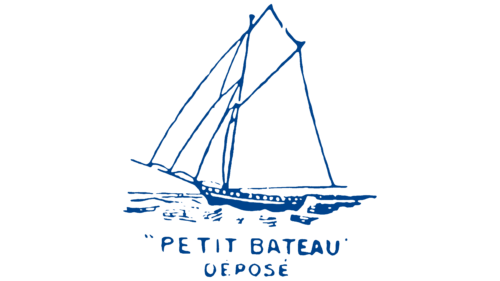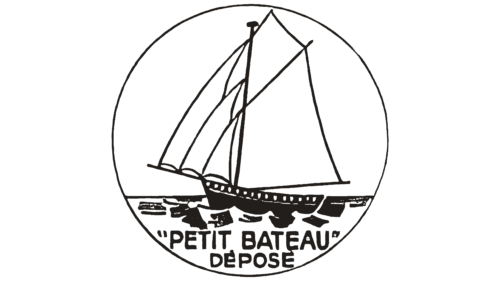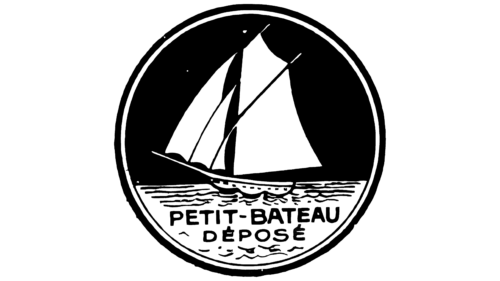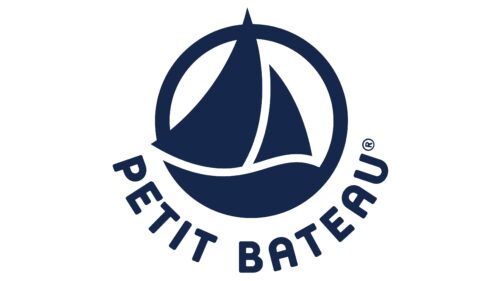The Petit Bateau logo carries a touch of romantic French heritage, which the brand has carefully preserved over the years. The company consistently upholds high-quality standards, aiming for dreams and continuous growth. Every emblem element is inspired and harmonious, reflecting the brand’s philosophy of blending tradition with modernity.
Petit Bateau: Brand overview
In Troyes, France, in 1893, Petit Bateau’s history began. Pierre Valton established the company by first manufacturing undergarments for ladies and children. At the time, a well-known children’s song inspired the name Petit Bateau, which translates from French to “Little Boat.”
A momentous occasion changed the course of the business’s destiny in 1918. Madeleine Valton, the founder’s son’s wife, invented the first children’s briefs by cutting the bottom of a child’s chemise. This idea gained popularity fast and served as a springboard for the brand’s subsequent success in the kids’ fashion market.
The enterprise experienced expansion and innovation during the 1920s. With the introduction of cotton knit fabric, the firm improved the comfort and functionality of its children’s clothes.
In the 1930s, the manufacturer began to produce adult apparel, which broadened its product line. The brand gained recognition for producing premium undergarments and T-shirts.
A lack of raw resources during World War II severely hindered production. Nevertheless, the business made it through this trying time and grew actively after the war.
The product line expanded, and the company grew internationally during the 1950s and 1960s. The business began shipping its goods to other nations in Europe.
Due to financial issues, the brand had to sell the business to the Yves Rocher Group in 1988. This purchase gave the company fresh momentum for growth.
The 1990s marked a phase of revitalization and advancement for the brand. The firm started working with well-known designers, which helped to modernize the brand and draw in new customers.
The inception of the retail network commenced in 1994 with the opening of its flagship store in Paris.
The 2000s were marked by the company’s continued growth of its global footprint. The business established retail locations in the US, Japan, and other nations.
The firm introduced a range of maternity clothes to reach a wider audience in 2004.
With the opening of its online store in 2010, the brand increased its online visibility.
Celebrating its 120th anniversary in 2013, the enterprise remained one of France’s most venerable and well-respected children’s clothing companies.
2015 saw the establishment of a partnership with renowned fashion brand Carven, which enhanced the company’s standing in the industry.
The business improved the functionality of its online store and unveiled a redesigned website in 2016, bolstering its online presence. As a result, the firm was able to participate more effectively in the expanding e-commerce market.
In 2017, a new range of environmentally friendly clothes made of organic cotton was introduced, mirroring the fashion industry’s ongoing shift towards sustainable production.
In 2018, the company extended its adult line and added fresh looks and patterns targeted at a younger demographic. Additionally, the business expanded its social media presence and used influencer marketing to reach a younger demographic of clients.
In 2019, the manufacturer expanded its global reach by opening multiple flagship locations in prominent cities around Europe and Asia.
Despite difficulties worldwide in 2020, the enterprise continued investing in digital marketing and online sales. A new loungewear collection was also introduced in response to the rising demand for cozy house attire.
A new loyalty program that provides individualized offers and special discounts to loyal clients was introduced in 2021.
In 2022, the firm modified its retail store model and combined aspects of conventional shopping with digital technologies to offer a more engaging shopping experience.
The company kept working with well-known designers and brands during this time, offering limited edition collections that aided in sustaining interest in the brand.
Additionally, the business put a lot of effort into creating its sustainability plan and introducing greener packaging and production techniques.
The company continued focusing on the quality and comfort that have always been its defining characteristics while expanding its product line to include new categories like accessories and home items.
Meaning and History
What is Petit Bateau?
This French company produces exquisite clothing for adults, children, and babies. This brand is associated with well-made and well-fitting clothes thanks to its classic design and durable materials. It is known for basic t-shirts, mariniere striped shirts, and cotton underwear. In addition to essentials, the company offers a full collection of clothing and accessories for people of all ages. The brand uses silky, organic materials and maintains high craftsmanship in its apparel. The company’s global distribution channels include department stores, online retailers, and in-house boutiques.
1920s – 1930s
The brand’s symbol is a graceful sailboat gently sailing on the waves, evoking associations with carefree childhood, adventure, and purity. Its silhouette is rendered in thin lines in a minimalist style, embodying freedom and forward movement, inviting a journey into the world of comfort and care that the brand provides to every child. The logo, created in a soft color palette using white and blue, conveys a sense of the sea, freshness, and lightness.
Beneath the sailboat is the brand’s name, taken from the nursery rhyme “Maman les p’tits bateaux,” which translates to “mommy’s little boats.” This name is connected to the company’s early beginnings in making women’s underwear. This retailer reimagined and transformed underwear, introducing small and lightweight “panties,” which laid the foundation for using diminutive and affectionate names.
1930s
The Petit Bateau logo, refined in the early 1930s, is a symbol that transports us to an atmosphere of romantic adventures and journeys. It was placed within a circle, creating the impression of a neat miniature reminiscent of a distant past and maritime adventures.
The thin black lines used to depict the sailboat appear light and airy as if barely touching the water’s surface. These lines create elegant contours of the boat, giving it an almost ethereal quality and adding a touch of nostalgia and grace to the emblem. The round shape of the emblem enhances the feeling of completeness and precision, making it resemble a seal or tag that could be attached to a product.
The sailboat symbol reflects the brand’s maritime roots and emphasizes its connection to nautical traditions. It’s an image and an entire story hidden in simple lines and form. The logo evokes the romance of the sea, the freedom that travel brings, and the enduring value of traditions that are still cherished today.
1930s – 1940s
The emblem, created in the 1930s-1940s, was significantly altered to convey a sense of naturalness and tranquility. The image of a sailboat against the backdrop of a black night sky creates an atmosphere of calm and coziness. In the quiet of the night, waves shimmering in the moonlight enhance the effect of deep relaxation.
This logo symbolizes travel, rest, comfort, and safety, all associated with the brand’s products. The company offers comfortable and high-quality underwear, evoking a sense of comfort that ensures a deep and peaceful sleep. The emblem invites customers into a dream world, like sailing on peaceful night waters, enveloped in calm and imagination.
This symbol is closely tied to the historical context of that time, when people sought simple joys, such as a comfortable sleep and solitude, especially during periods of instability and change. The emblem reflected the brand’s care for its customers, a promise of comfort and coziness at every moment of their lives.
1940s – 2000s
The logo was redesigned in a more childlike style, depicting a white schematic sailboat on a gray background. This sailboat resembles a toy, evoking associations with childhood imagination and a world where children are always reaching for new horizons. The brand offers clothing that doesn’t distract from play and provides young adventurers comfort.
2000s – 2010s
The design of the 2000s became one of the most memorable and accurately reflected the brand’s spirit. The emblem is enclosed in a blue circle, creating a sense of security and belonging to a world of childhood dreams. The ship sails on blue waves, and its yellow sail extends beyond the circle, symbolizing the strength and boundlessness of a child’s imagination. The logo combines a playful innocence with a sense of romance. During this period, the brand expanded its range by adding adult clothing. It opened a store on the Champs-Élysées, symbolizing its ambition for a greater future, toward which the ship on the emblem is sailing.
2010s – today
The modern logo features the silhouette of a sailing ship executed in a monochromatic dark blue palette. It symbolizes the journey toward dreams and great achievements, reflecting the company’s commitment to creating products that support customers on their life path.
At the beginning of its journey, the company produced high-quality underwear, which evoked the strength and reliability of sailors embarking on long sea voyages through its design and materials. The sailing ship became a kind of totem for the brand, emphasizing its connection to tradition and its drive to conquer new horizons.
The dark blue color symbolizes depth, stability, and professionalism. This color is associated with the sea and sky, highlighting the brand’s connection to nature and the inspiration it provides. The monochromatic design lends the emblem simplicity and elegance, making it easily recognizable and memorable.
The company’s name harmoniously completes the logo’s composition, written in an arc beneath the ship image. The font is simple and unadorned, emphasizing the originality and practicality of Petit Bateau products. The arc, in turn, creates a sense of movement and dynamism, echoing the image of the ship racing forward toward discoveries.
The logo’s visual style is both classic and modern. It reflects the company’s years of experience and commitment to preserving traditions while keeping pace with the times.

